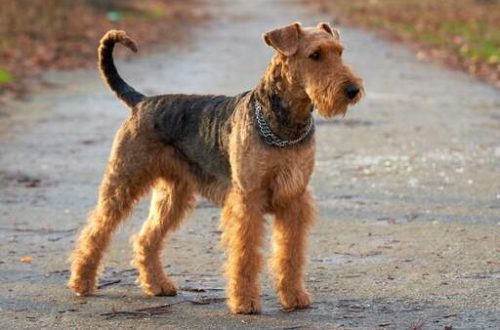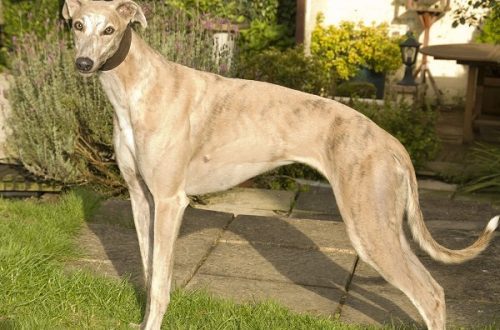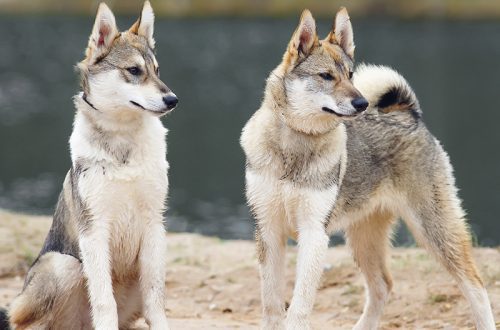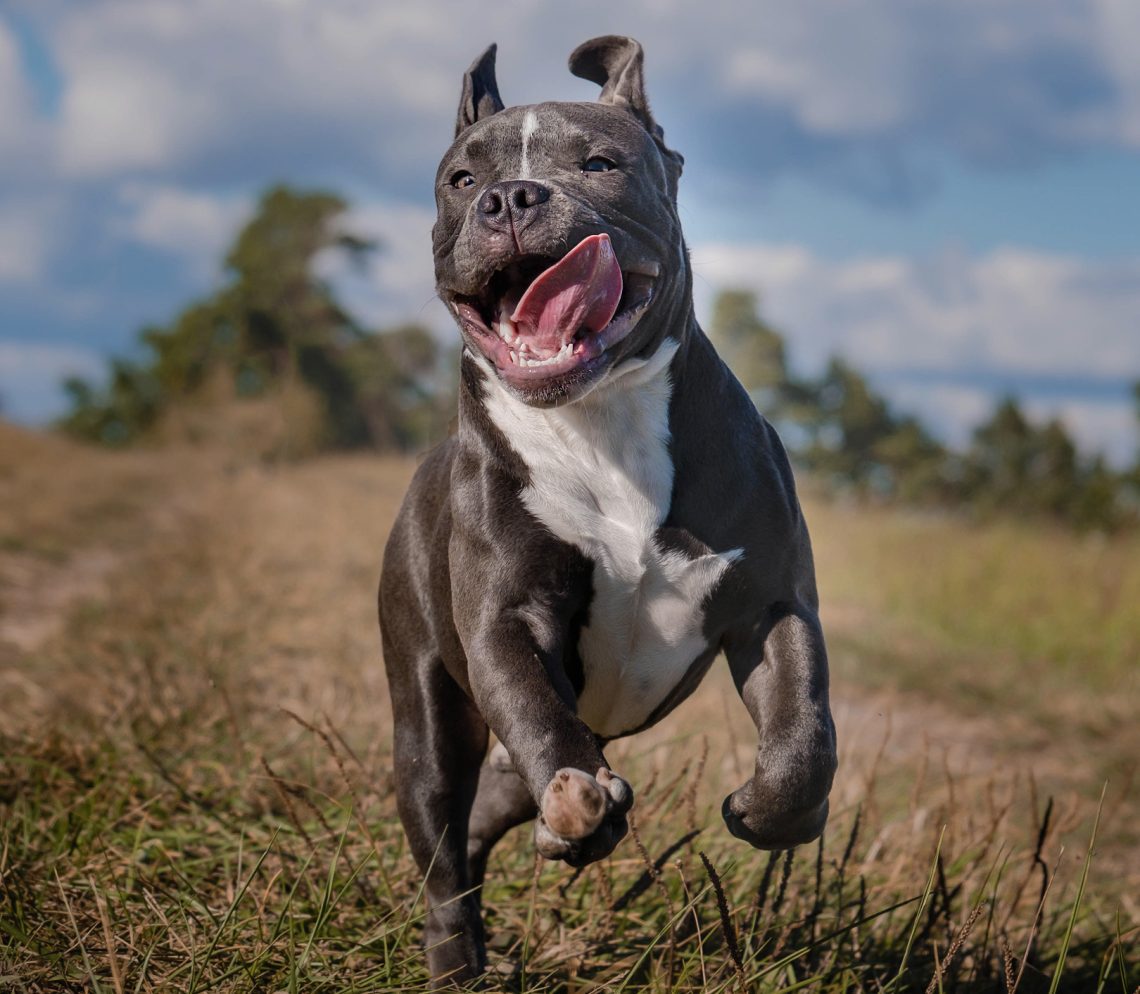
American Bully
The American Bully is the bodybuilder in the dog world. When looking at this squat burly man with the grin of a predator, one can hardly believe in the friendliness and meek disposition of the animal. However, down with the stereotypes!
Contents
- American Bully – Short information
- Basic moments
- History of the American Bully
- Video: American Bully
- American Bully breed standard
- Breed standards
- Character of the American Bully
- American Bully Photo
- Education and training
- Care and maintenance
- American Bully health and disease
- How to choose a puppy of American Bully
- American bully price
American Bully – Short information
- Breed Name: American Bully
- Country of Origin: USA
- Weight: 30-58 kg
- Height (height at the withers): 40-57 cm
- Life span: 8-12 years
Basic moments
- The American Bully is a young breed, but has already managed to catch the fancy of dog breeders: a formidable appearance, coupled with an affectionate character, surprises many.
- In addition to the unofficial ones, there are four registered breed types: standard, classic, pocket (pocket) and XL.
- These dogs join any family “collective” and treat each person with tenderness, and especially to the one they consider their master.
- It is hard for American Bullies to come to terms with constant loneliness, but the absence of the owner during the working day will not cause resentment in animals.
- Being the owners of a good-natured character, dogs still tend to dominate others, so they need a firm hand – both for education and for training.
- Bullies are good guards, but they lack the aggression towards strangers to make it to the top guard breeds.
- “Americans” get along well with children of any age, but you should be careful with keeping representatives of this breed in families with other pets.
- Novice dog breeders are unable to cope with these obstinate giants.
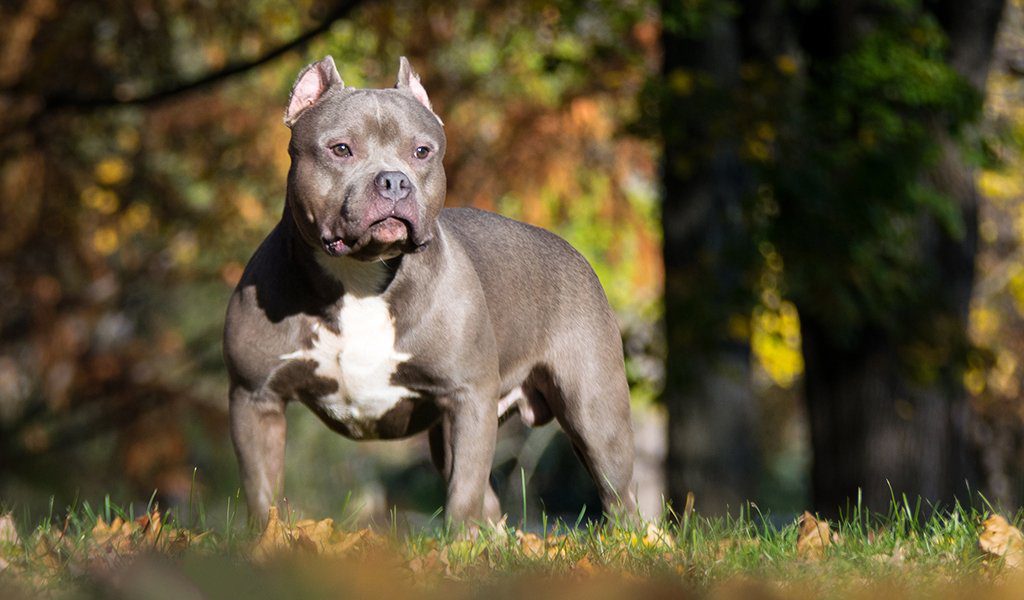
The American Bully comes from the last decade of the last century. The personality of this intimidating athlete hides confidence, good nature and a rare but charming knack for getting into funny situations. Bully perfectly fits the description of “my affectionate and gentle beast”: his loving and loyal attitude towards family members surprises even experienced dog breeders. At the same time, the animal is always ready to demonstrate power and remarkable strength – especially when it comes to protecting those who are dear to him. Do not get in the way of an angry dog: playing with fire will result in tragic consequences.
History of the American Bully
Despite the recent origin of the breed, at that time the fame of its ancestors had not subsided for two centuries. The reason for this is the relevance of bull-baiting, bloodthirsty entertainment with the only possible outcome: the dog attacked the bull chained to the ground. This spectacle delighted casual onlookers and participants in the underground sweepstakes. The universal soldiers of the bloody arena were considered dogs obtained as a result of crossing the terrier and the Old English Bulldog.
With the prohibition of bull-baiting in 1835, lovers of cruel games found a replacement for her in the face of dog pits. At the same time, through careful selection, new fighting breeds were bred – candidates for baiting: the bull terrier and the Staffordshire bull terrier . The latter, having migrated to the USA, acquired a new name – American Pit Bull Terriers .
Thoughts about creating a breed (according to another version, improving the character of an existing one) have been visited by breeders since the 1980s, but breeding work began a decade later. Her goal was to create a companion dog that would retain its intimidating appearance but acquire an accommodating and friendly disposition. The task seemed impossible given the “material”, because not decorative breeds, but ferocious four-legged fighters participated in controlled matings. Aggression is so firmly rooted in the character of pickling dogs that breeders had to spend more than one year to completely eradicate it.
Documentation on breeding work on American bulls does not have reliable information, therefore, not only pit bull terriers and Staffordshire terriers , but also bulldogs – French , English and even American are considered potential progenitors of the breed . Many kennel founders (Razor’s Edge owner Dave Wilson in particular) have denied inbreeding between more than two breeds, but the fact remains that the American Bully’s genotype has incorporated traits from at least five breeds.
The history of the origin of the breed is notable for the fact that more than one dog breeder or club was engaged in breeding work. Hundreds of American specialists worked on the creation of improved animals. They mainly lived in the states of Southern California and Virginia, but soon the fashion for dogs spread throughout the country. The future breed was given a name – bully, which in English means “hooligan, bully.”
Since the American Bully breeders did not share the results of breeding work and did not unite in groups for further selection of dogs, the conformation of the animals differed significantly. Among the first bulls there were large and smaller individuals that had different proportions, structure and body type. The palette of colors included more than a dozen options. However, the similarity of the dogs with their distant ancestors still caused confusion and prevented the further development of the breed. This was the impetus for the creation of tribal organizations and clubs. Among them are the American Bully Kennel Club (ABKC), the United Bully Kennel Club (UBKC), the Bully Breed Kennel Club (BBKC), the United Canine Association (UCA), the United Kennel Club (UKC). Europe was no exception: the European Bully Kennel Club (EBKC) was founded here.
The appearance of a new breed caused a wave of indignation among lovers of amstaffs and pit bulls . They considered the American Bully nothing more than an unceremonious interference in the breeding of classic fighting dogs. According to breeders, representatives of the new breed could not boast of either an exterior or attractive working qualities. In addition, the dishonesty of individual breeders would lead to the appearance of mestizos – owners of a similar appearance, but weakened immunity and health.
The recognition of the breed took place in 2004. ABKC, UKC and EBKC were the first dog organizations to put “Americans” on the official register. They also fixed the Bully standard, which includes four varieties of dogs. Some small associations have even developed their own classification of the breed, based on the exterior and size.
At the international level, the American bully is still not recognized, although the number of dogs is growing every year. The main part of the lovers of these giants is concentrated in the historical homeland of the breed – the USA. European countries do not have a rich selection of nurseries where bulls are bred, for example, no more than a dozen are located in Russia. Despite this, dogs are increasingly valued for the qualities of irreplaceable companions and the ability to flawlessly perform the tasks assigned to them.
Video: American Bully
American Bully breed standard
The American Bully is a medium sized breed. In the appearance of animals, there is a distant resemblance to their ancestors – pit bulls and amstaffs – with the exception of a more powerful and stocky physique. Despite the impressive mountain of muscles, the dogs are quite compact and agile, therefore they are able to give odds to many representatives of fighting breeds – both in speed and in endurance.
American Bullies are divided into four categories based on their height at the withers.
- Standard (Standard) – the standard of the breed. considered the most numerous. The height of males varies between 43-51 cm, females – 40-48 cm.
- Classic (Classic) – a lightweight version of the “standard” bully. It has the most obvious resemblance to pit bulls and Staffordshire terriers . The height of the animals at the withers is similar to the “standard” type: 43-51 cm (males) and 40-48 cm (females).
- Pocket, pocket (Pocket) – the smallest of all the “Americans”. The growth of males reaches 36-43 cm, females – 33-40 cm. Otherwise, the appearance of the dogs is fully consistent with the breed standard.
- XL is the giant of the American Bully. Male individuals grow up to 51-57 cm, female – 48-54 cm.
In addition to the main categories, there is an unofficial classification of “Americans”. Bullies, which are lower than the representatives of the type of pocket, belong to the variety “Micro” (Micro). The largest dogs belong to the XXL category. Previously, the fifth type, Extreme, was also included in the number of types fixed by the standard. Over time, it was abolished at the initiative of the American Bully Kennel Club for demonstration purposes.
The body weight of dogs depends on their height at the withers, but in general varies from 30 to 58 kg.
Breed standards
Head and skull
Bully’s head is square and of medium length; seems massive and heavy, clearly defined. Never looks disproportionate to the body of the dog. The broad skull is notable for its pronounced frontal part. Relief muscles are felt under dense skin, muscles in the cheeks are especially developed.
Muzzle
Wide and weighty; its shape is close to a square. The structure of the muzzle does not interfere with the free breathing of the bully. Its length is less than the length of the skull, it is not less than ¼ and not more than ⅓ of the total length of the head. Minor wrinkles are allowed. The transition from forehead to muzzle is deep and distinct, but not as deep as in brachycephalic dog breeds. The back of the nose is wide and straight, “passes” into a large earlobe with developed nostrils. For her, pigmentation in any color is acceptable, except for reddish hues (indicative of albinism). The lips of the animal fit snugly to the teeth; “sagging” in the area of the corners of the mouth is permissible.
Ears
The ears are slightly forward, as if the American Bully is always alarmed by something; have a high position. Ear cropping is allowed to create one of four forms: fighting (battle crop), short (short crop), exhibition (show crop) or long (long crop). Many dog owners refuse this procedure because “natural” ears are not considered a disqualifying vice.
Eyes
American Bullies have medium-sized eyes; set wide, deep and relatively low in relation to the skull of the animal. The shape of the eyes is almond-shaped or oval. The conjunctiva of the lower eyelids is almost invisible. Any color of the iris is acceptable, except for blue and blue, if it is in harmony with the color of the bully.
Jaws and teeth
The strong jaws of the “American” form a scissor bite. At the same time, the lower jaw is stronger and “frightening” in comparison with the upper one; its conditional line is parallel to the muzzle. A complete dental formula is required.
Neck
Medium length, with distinct muscles; tapering from the back of the skull to the back. A small “arch” is noticeable on the nape. The skin is dense and elastic. Flabbiness is only acceptable for XL American Bullies.
Frame
The case looks massive, but at the same time compact. The format is square. The distance from the withers of the dog to the elbows and from the elbows to the paws is the same. The option when the second value is slightly less than the first is acceptable, but undesirable. The chest is formed by smoothly rounded ribs, does not protrude forward beyond the shoulders. It looks very wide due to the huge distance between the forelimbs of the bully. The back is short and strong, and may be raised in relation to the croup. The latter is slightly inclined to the base of the tail. The loin is short and wide. The underline is moderately tucked up.
Tail
Mostly hook-shaped; a direct “analogue” is also acceptable. Set on low, tapering from base to tip. In a calm state, lowered to the level of the hocks. In movement, it rises, continuing the topline. If the American Bully is agitated or alarmed, the tail may be “thrown” over the back, but in no case should it be twisted into a ring.
Forelimbs
Muscular and strong, slightly turned out towards the forearms. The humeri are laid back, connected to the wide and long shoulder blades at an angle of 35-45°. The elbows are tightly pressed to the chest, but a small gap is still acceptable. The pasterns are flexible and powerful, located at a slight angle to the surface. The paws are round and arched, in proportion to the overall dimensions of the dog. Removal of dewclaws is desirable but not required.
Hind limbs
Strong and broad, seen from behind, parallel and straight. They are notable for their developed muscular system (the latter is especially noticeable in the hips of the animal). Should look proportionate in comparison with the forelimbs. The hocks are set low and well arched. Deviations are only allowed for Class XL American Bullies. The lowered pasterns are perpendicular to the surface of the earth, turning into rounded paws. If desired, dewclaws can be removed, but their presence is not regarded as a disqualifying defect.
Movement style
American Bulls move confidently and imposingly, but at the same time they look as if they are expecting a sharp change of events every second. The gait is characterized by a strong push of the hind limbs. The trot is powerful, but at the same time light and well coordinated. The line of the back remains straight, let’s assume its smooth bend in time with the movements of the dog. Limbs go neither out nor in; do not intersect with a cross and do not “get entangled”. With increasing speed, the legs move more and more closer to the center line.
Coat
The body of the American Bully is covered with short and moderately rough hair. It fits snugly to the body; there is not the slightest hint of baldness. In any light, a glossy sheen of hairs is noticeable. The undercoat is missing.
Color
The breed standard is loyal to the color of the “American”. Any color combinations and shapes of points are allowed. An exception is the marble color (merle).
Possible vices
Common defects in the American Bully breed include:
- light pink or reddish pigmentation of the nose;
- excessively short or long tail;
- pointed and/or long muzzle;
- underdeveloped lower jaw;
- wavy or curly hair;
- elongated coat;
- exposed third eyelid
- weak and thin neck;
- clumsy movements;
- undershot or overshot;
- bulging eyes;
- twisted paws;
- creases on the tail;
- smooth stop;
- direct bite;
- heterochromia;
- snub-nosedness;
- amble.
Dogs are disqualified for the following reasons:
- ears shaped “bat” (like a bat);
- unilateral or bilateral cryptorchidism;
- cowardly or aggressive behavior;
- marble coat color;
- docked tail;
- curled tail;
- dwarfism;
- albinism;
- deafness.
Character of the American Bully
Although the American Bully looks tough and snobby big men, their appearance is nothing more than fertile ground for the emergence of frightening stereotypes. In fact, representatives of the breed are cheerful and balanced dogs that easily make contact and show genuine friendliness to others. American bulls do not avoid communication and affection, they will happily roll over on their back in front of you and close their eyes in anticipation of quivering strokes.
Animals are distinguished by an amazing ability to get along with all members of the “flock”, as they say, from small to large. Bullies are able to catch the “weather in the house” and in a timely manner discharge the tense atmosphere with a funny and clumsy trick. Representatives of the breed are friendly to all family members, but only one is considered the owner. With him, the dogs are gentle to the point of insanity and by all means strive to bring a happy smile on the face of a loved one. If you managed to find the key to the heart of a charming giant, be prepared for an obsessive (and sometimes manic) pursuit: American bulls do not like to let their owner out of sight.
Due to the tendency to become attached to the family, these animals will not be able to spend most of their time alone. If you are accustomed to spontaneous trips outside the city and the desire to put your thoughts in order in seclusion, refuse to purchase an American bully. These dogs need constant attention, but still they will not destroy furniture and howl at the locked door incessantly in the short absence of the owner.
For your information: it is not recommended to often leave the bully for independent care. Over time, the animal will no longer see you as a leader whose words you need to listen to, and this is fraught with additional problems with the pet.
Despite the phlegmatic and good-natured disposition, the “Americans” tend to dominate novice dog breeders. This is especially true for young males who seek to defend their rights not only among relatives, but also among people. Most often, bulls make attempts to usurp power at the age of one and a half years. To avoid this, it is worth clearly defining the hierarchy already from puppyhood, otherwise the intervention of a professional dog handler will be required. If you have no experience in keeping fighting dogs, look at other breeds. The American Bully will not suit the elderly, as well as the owners of a mild character.
Animals are known for their developed hunting instincts, which makes them fairly tolerable candidates for the role of guard dogs. The American Bully often lacks the aggressiveness to be considered ideal guards. Bully owners laugh it off: this is not necessary, because the intimidating appearance of dogs is enough to scare strangers from a protected area. If any of the family members are in danger, the “Americans” turn into a killing machine literally at the snap of their fingers. At this moment, the size of the enemy is unimportant to the bull: the animal will protect loved ones to the last.
Representatives of the breed are ideal as family dogs. Animals show amazing love towards children and courageously endure their antics. Curiosity, playfulness, the desire for pranks and adventures are the main reasons why these big guys find a common language with small family members. American Bulls are capable of active play for hours without snapping or biting in response to painful jolts.
Important: it is highly undesirable to leave a bully alone with a small child. The impressive dimensions of the animal are quite traumatic.
Well socialized dogs get along well with other pets. An exception may be mature males who get involved in a fight for any reason – from territorial to sexual. This is especially noticeable during a walk, when the American Bully can show aggression towards relatives. Cats, decorative rodents and birds are not the best company for dogs. If possible, limit the contact of the “American” with these pets.
Bullies cannot be called real “give-ups”, but they are not considered couch potatoes either. Even an ordinary person can satisfy the need of representatives of the breed for activity. A long walk (at least one and a half hours) twice a day is enough. Bully owners recommend occasionally going camping with their dogs: a new environment, active games and communication with the owner will give the pet a lot of positive emotions!
American Bully Photo
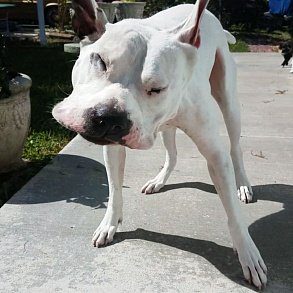
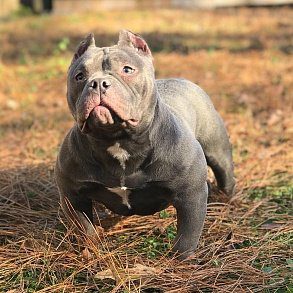
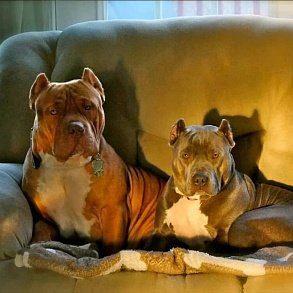
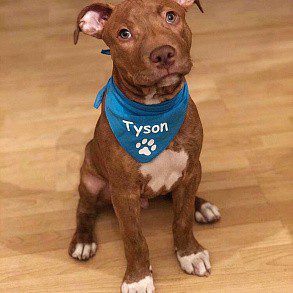
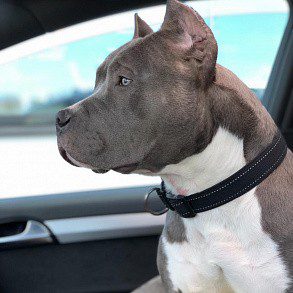
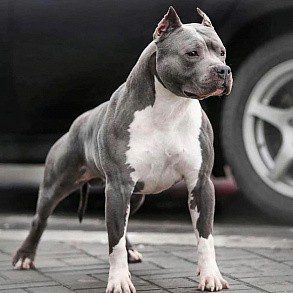
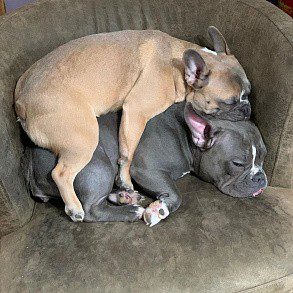
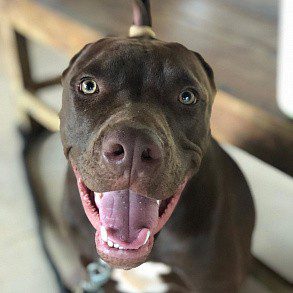

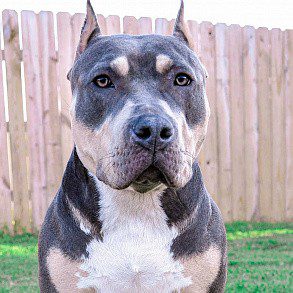
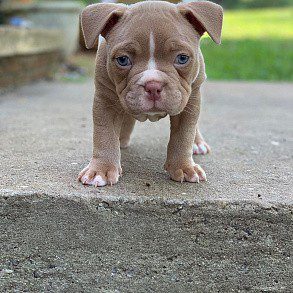
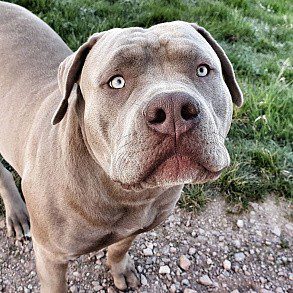
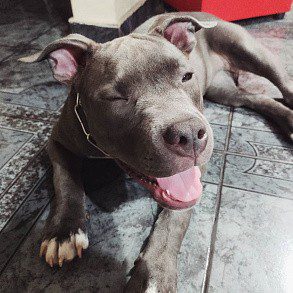
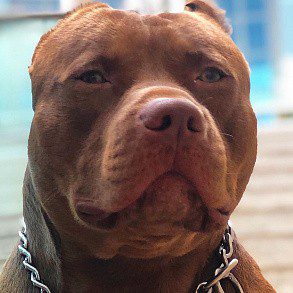
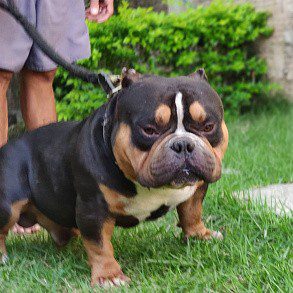
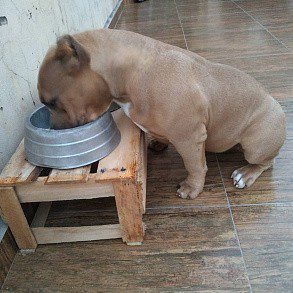
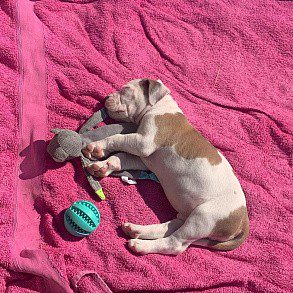
Education and training
Despite a high level of intelligence and a desire to please their owner, the American Bully is not the easiest breed to handle. These dogs need socialization from the first day they enter a new home. It is important to teach your pet to calmly respond to everything that may be new to him: sounds, smells, animals and people. At the same time, a trusting relationship between the owner and his ward is extremely important. You have to become both a true friend and an unconditional leader for the bully, otherwise communication with the dog will give a lot of trouble.
The intervention of an experienced dog handler in the case of an American bully will not be superfluous. Representatives of the breed subtly feel the hierarchy of the “pack” and, at the first opportunity, strive to take a dominant position. It is necessary to besiege the pet in time, thereby letting him know: the place of the leader is not disputed. The upbringing of an “American” should be moderately strict, without the use of physical force. If you act exactly the opposite, you can easily turn a bully into an embittered and naughty creature.
Dog owners describe the breed as quite burdensome to train at home. Once in the hands of a beginner, the American Bully will eventually show obstinacy and disobedience. This rule is especially true for young males, which express a tendency to dominate more than females. For fruitful training, teams are advised to use the services of an experienced trainer who has previously worked with fighting breeds. By watching the strategy of a professional, you yourself will understand how to handle American Bullies in order to avoid problems.
Please note: from the age of 6 months it is necessary to enroll a pet in obedience courses. With ZKS (protective guard service) you will have to wait until the dog is two years old. Early classes are fraught with problems with the psyche of the American Bully.
Contrary to the common misconception that training is impossible without the use of force, bulls need positive methods. At the same time, among the animals there are both gourmets, who are easy to motivate with a “sweetie”, and sissies, who cannot imagine learning without gentle stroking behind the ear. In the situation with the “Americans” it is impossible to get by with the common truths of training. These dogs are motivated by the most unexpected things, from a walk in the park to buying a new squeaky ball. You have to understand what pleases your pet the most – and then the training of commands will go like clockwork!
Care and maintenance
Caring for an American Bully is not much different from caring for another shorthaired breed. For a neat appearance of the dog, it is enough to comb out the coat weekly with a brush with coarse bristles or a furminator glove. Combs with rare teeth are ineffective. The seasonal molting of the animal passes almost imperceptibly, especially if you increase the frequency of combing up to two times a week.
American Bullies do not need regular bathing. It is enough to wipe the dogs with a damp towel or “sprinkle” with dry shampoo to eliminate oily sheen. If your pet is dirty, use a hygienic product without alkalis and acids, and then rinse the shampoo with warm running water. The short “fur coat” of the bully dries out rather quickly, so it is not necessary to frighten the dog with a loud buzzing of the hair dryer. One has only to allocate a secluded corner to the animal and make sure that there are no drafts. Despite strong immunity, American bulls are prone to colds.
Remember: it is not recommended to bathe a bully more than once or twice a month! Otherwise, the coat will lose its protective fatty layer, and the balanced functioning of the glands will be disturbed. This is fraught with the appearance of a specific smell, which is very difficult to get rid of.
Be sure to set aside time for a daily examination of the ears of the “American”. Dog owners do not recommend wiping the ears for no apparent reason: there is a high risk of provoking inflammation by accidentally introducing an infection. Remove dirt and dust only as needed with a cotton swab moistened with drying lotion. The use of cosmetic sticks is best avoided: careless movement can injure soft tissues.
The eyes of the American Bully need regular examination, especially after a walk in windy weather. Foreign particles are removed by sweeping movements directed to the inner corners. To do this, use a cotton pad and a special solution. As an alternative to the latter, you can take strong tea. With abundant souring, tearing or redness of the eyes, it is necessary to consult a specialist about the treatment.
Maintaining cleanliness requires the bully’s oral cavity, which, due to the anatomical structure, is prone to plaque formation. For its complete removal, two procedures per month are enough. Instead of a “human” paste, use its analogue for animals (you can treat your pet to a product with an unusual taste). Don’t forget your toothbrush or finger brush. In extreme cases, you can use a bandage tightly wound around your finger.
Preventive teeth cleaning is also important – with the help of environmentally friendly rubber toys or treats made from compressed bones. They will slow down the formation of hard tartar, which can only be removed in a veterinary clinic.
Despite the high activity of the American Bully, natural grinding of the claws on a hard surface is not enough for the comfort of the pet. Get a nail cutter for large breeds – guillotine (for pocket-type “Americans”) or sickle-shaped (for bullies of standard, classic and XL varieties). Regularly shorten the dog’s “manicure”, remembering to smooth out sharp edges with a nail file.
In the winter season, it is necessary to carefully examine the paw pads: salt, which is sprinkled on ice, can provoke a chemical burn. Since the breed is distinguished by a high pain threshold, the pet will endure serious injuries without showing any signs.
One of the central roles in the full development of the American bully is its nutrition. Dog owners claim that pets can be fed both high quality industrial food (not lower than premium class) and natural products. It does not matter which option you choose, because the main thing in feeding a bully is a balanced diet.
The advantage of ready-made feeds is the correct proportions of vitamins and microelements, which are necessary for the dog’s well-being. A diet of natural origin implies the additional use of mineral supplements. Talk to your veterinarian about the vitamins that are right for your dog. Self-activity in this case is not welcome.
The basis of a natural diet should be dietary meat, ideally boiled beef without salt and other spices. It is recommended to combine it with cereals: wheat, buckwheat or rice. Legumes are undesirable because they cause bloating. The use of fermented milk products (yogurt, low-fat cottage cheese, kefir) is permissible no more than 2-3 times a week, otherwise the animal will face problems with the gastrointestinal tract.
Do not forget to please the American Bully with seasonal vegetables and fruits: they are not only tasty, but also healthy. A tablespoon of vegetable oil, added daily to food, will improve the condition of the dog’s skin and coat. Suitable olive, corn, sunflower or linseed.
An American Bully puppy between the ages of 2 and 6 months is fed at least 5 times a day. In the period up to a year, the number of meals decreases to 3-4. An adult dog older than 12 months is recommended to feed no more than 2 times a day. Moderate portions combined with physical activity will help to avoid obesity.
The diet of the animal should not include:
- boiled, canned or raw fish (marine is acceptable);
- fatty, salty, spicy and pickled foods;
- foods high in caffeine;
- bones of large animals, birds and fish;
- raisins, currants, grapes;
- raw and/or fatty meat;
- potatoes in any form;
- persimmons, peaches and plums;
- whole milk;
- onion and garlic;
- citrus;
- raw eggs;
- mushrooms.
The dog must have constant access to clean drinking water; ideally – bottled, but it can be replaced with flowing, after insisting for 6-8 hours.
American Bulls are heat-loving creatures who like the comfort of city apartments or private homes. For keeping in an aviary, it is better to opt for longer-haired breeds: German Shepherd , Scottish Collie , Bobtail or Alabai . Keeping a dog in “greenhouse” conditions implies physical activity – small, but regular (at least 3 hours a day). Walking in special vests with a load is useful for building and strengthening muscles. Let your pet try his hand at more familiar “dog” sports: agility, object fetching or weight pulling.
American Bully health and disease
Because the breed is relatively recent, American Bully breeders have never come to a consensus regarding the health of these powerful dogs. On average, bulls are distinguished by strong immunity, but are prone to certain ailments. Among them:
- intolerance to hot weather;
- atrophy of the optic nerve;
- joint dysplasia;
- problems with teeth;
- demodicosis;
- cataract.
Since representatives of the breed are prone to heart pathologies, an annual veterinary examination is required. In addition, do not neglect regular vaccination, as well as treatment from external and internal parasites. This will help the American Bully stay healthy for as long as possible.
How to choose a puppy of American Bully
Buying an American Bully can be a test in the spirit of the treasure hunter Indiana Jones: there are only a few kennels in Russia that specialize in breeding the breed. They are mainly concentrated in the vicinity of Moscow, St. Petersburg and other large cities.
Often unscrupulous breeders sell pit bulls and amstaffs under the guise of bullies : in puppyhood, these breeds really look alike. In order not to become a victim of deceivers, contact European and American breeders who have established themselves as conscientious specialists. If there is no opportunity to purchase a “foreign” bully, it is worth using the services of an expert cynologist who has dealt with fighting dog breeds and can easily distinguish them from each other.
However, do not be upset: the relatively small population of the breed indicates that specimens with good genetics participate in the breeding program. First of all, decide on the type of American bully: standard, classic, pocket or XL. In puppyhood, the animals look the same, so if you need a certain breed class, look for older dogs (from six months and older).
The placement of puppies begins at 1.5-2 months, when they no longer need maternal care. Healthy babies show activity (sometimes excessive) and curiosity in relation to the world around them, they look well-groomed and tidy. Does your favorite puppy cowardly tuck its tail and hide in a secluded corner? Refuse to purchase it: there is a high risk of acquiring a sickly pet, with which visits to the veterinary clinic will become a tradition.
After choosing a dog, ask the breeder to provide a passport with primary vaccination marks. It is recommended that you first clarify the point regarding the conditions for keeping animals. At first, it is desirable to recreate the atmosphere as close as possible to the nursery, so that the four-legged friend quickly adapts to life in a new family.
American bully price
The cost of representatives of the breed is determined by the following factors:
- the status and location of the nursery;
- compliance with the standard;
- pedigree;
- floor.
The price of an American Bully starts from 2300$ and often exceeds 8000$. Culled dogs are charged a lower price, but these animals cannot participate in the breeding program. Natives of European nurseries are much cheaper: about 700 euros. However, the high price and rarity of the breed only fuel the interest of dog breeders: American Bulls are ideal friends and companions, without which life seems no longer so fun and exciting!



